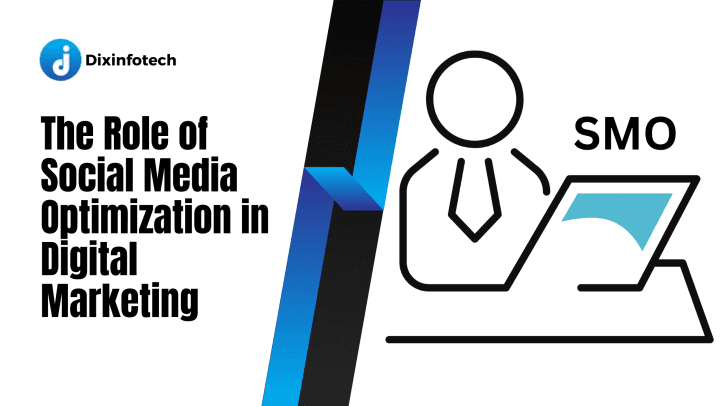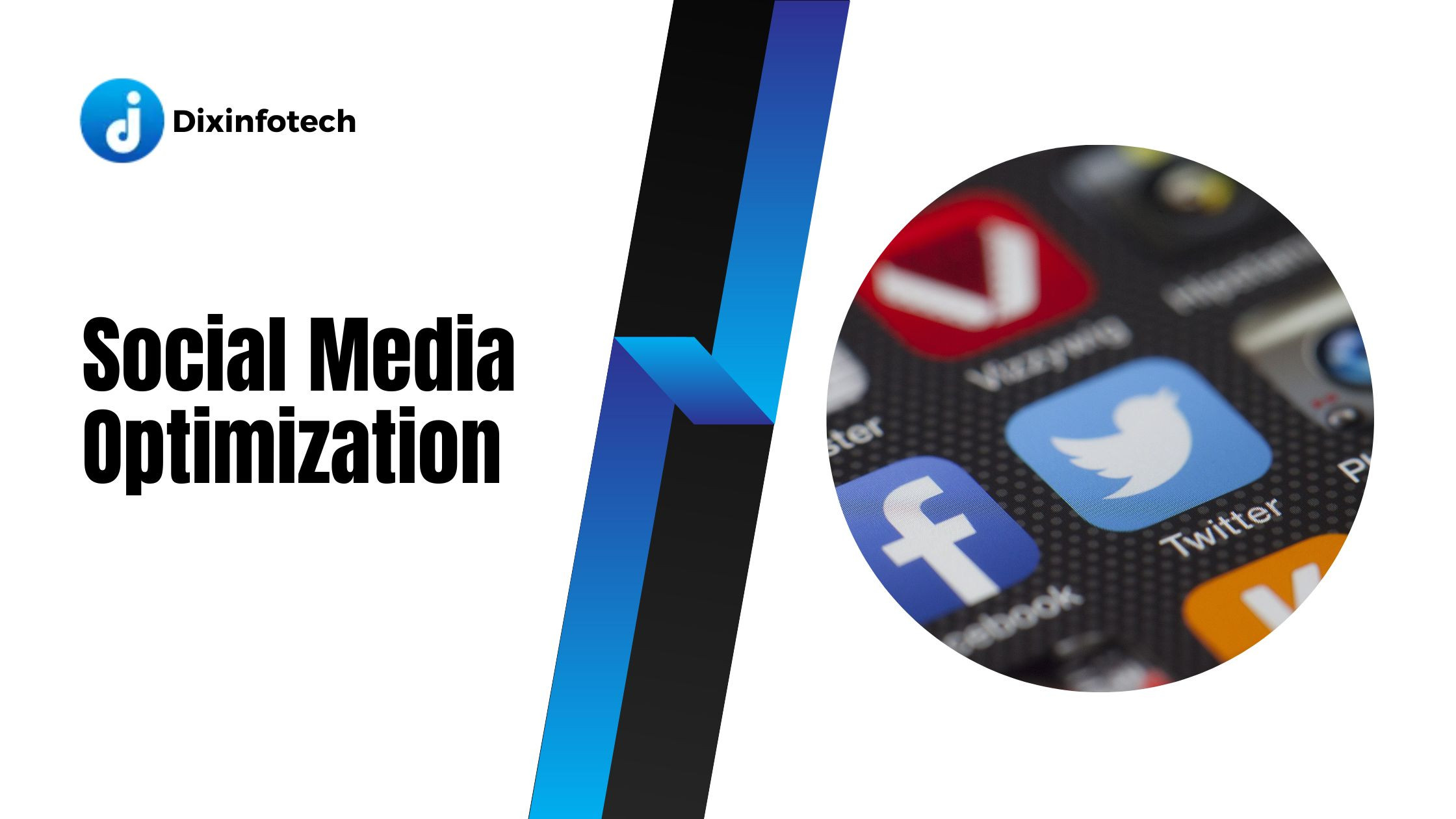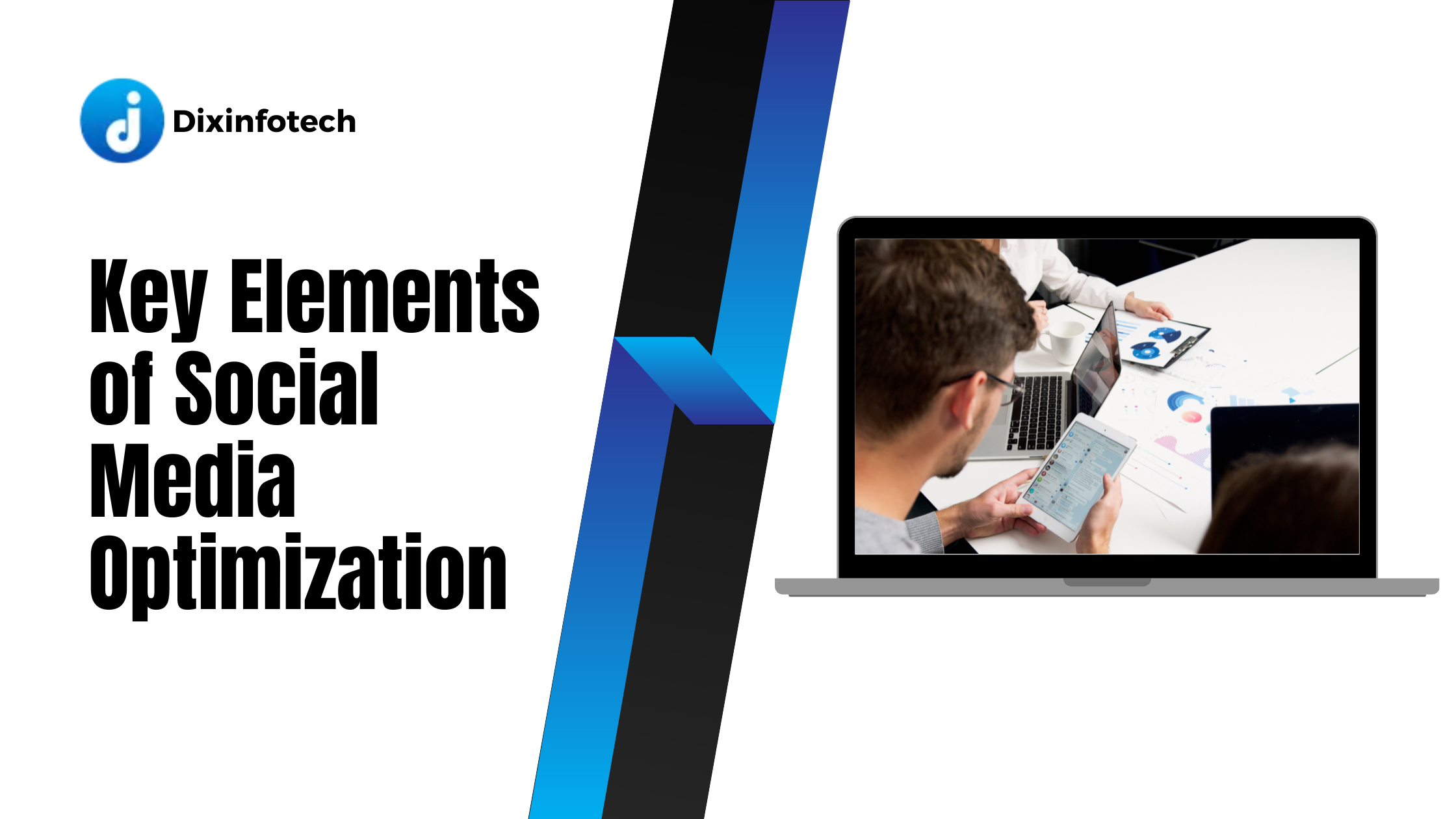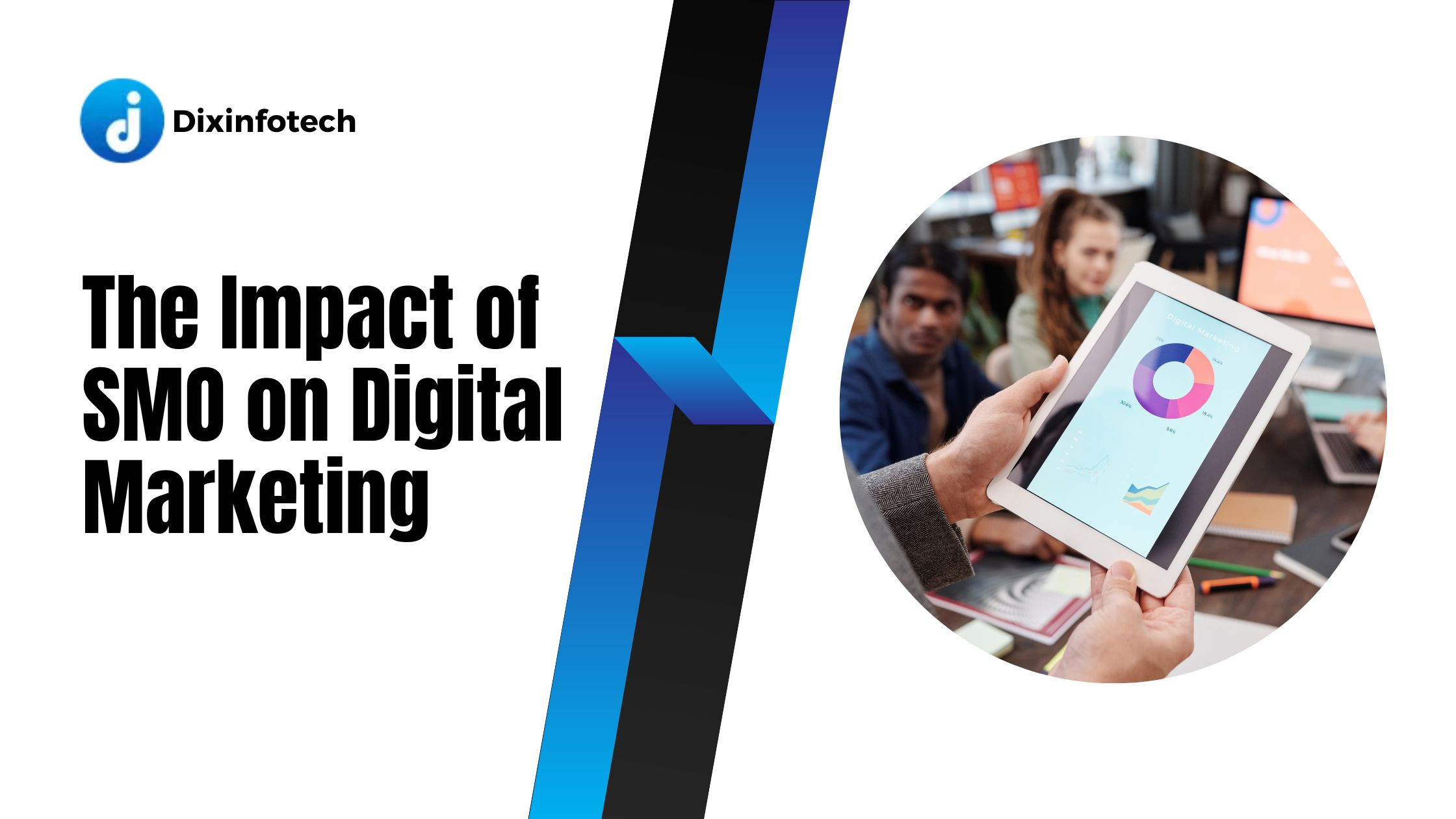

Social Media Optimization (SMO) refers to the process of strategically optimizing and leveraging various social media platforms to enhance the online presence and visibility of a brand or business. It involves utilizing social media channels and their features to connect with the target audience, increase engagement, drive website traffic, and ultimately achieve marketing goals. SMO encompasses various techniques such as content creation, community management, audience targeting, and analysis of social media metrics.
Digital marketing encompasses all the activities and strategies employed to promote products, services, or brands using digital channels such as websites, search engines, social media, email, and mobile apps. It has become an integral part of modern marketing due to the widespread use of digital technologies and the significant impact they have on consumers' lives.
Digital marketing offers numerous advantages over traditional marketing methods. It allows businesses to reach a wider audience, target specific demographics, track and measure results, and engage with customers in real-time. With the ability to personalize and tailor marketing messages, digital marketing enables businesses to establish meaningful connections with their target audience, drive conversions, and build long-term customer relationships.
In the digital landscape, social media has emerged as a powerful platform for communication, networking, and information sharing. Social media platforms like Facebook, Instagram, Twitter, LinkedIn, and YouTube have millions of active users, making them valuable channels for businesses to connect with their target audience. This is where the role of Social Media Optimization (SMO) comes into play.
SMO plays a vital role in digital marketing by leveraging the reach and engagement potential of social media platforms to achieve marketing objectives. It involves developing and implementing strategies to optimize social media profiles, create compelling content, and engage with followers to drive brand visibility, increase website traffic, and foster customer loyalty.
By effectively utilizing SMO techniques, businesses can build a strong social media presence, engage with their target audience, and establish themselves as industry leaders. SMO enables businesses to create meaningful connections, listen to customer feedback, address concerns, and nurture brand advocates. Furthermore, SMO can enhance the effectiveness of other digital marketing efforts, such as content marketing, SEO, and influencer marketing, by amplifying their reach through social media channels.
Social Media Optimization (SMO) refers to the process of strategically optimizing and leveraging various social media platforms to enhance the online presence and visibility of a brand or business. It involves utilizing social media channels and their features to connect with the target audience, increase engagement, drive website traffic, and ultimately achieve marketing goals.
The purpose of SMO is to maximize the impact of social media platforms in promoting a brand or business. It aims to enhance brand visibility, generate buzz, foster community engagement, and establish a positive brand image in the digital space. SMO focuses on crafting compelling content, building an active and loyal follower base, and leveraging social media features to create meaningful connections with the target audience.
Enhance brand visibility: SMO aims to increase the visibility of a brand or business across social media platforms. By optimizing social media profiles, utilizing appropriate hashtags, and leveraging trending topics, SMO helps businesses reach a wider audience and gain exposure.
Drive website traffic: One of the primary objectives of SMO is to drive targeted traffic to a website. By creating engaging and shareable content, optimizing posts with links, and incorporating call-to-action buttons, SMO encourages social media users to visit the brand's website for more information, products, or services.
Foster audience engagement: SMO strives to cultivate a community of engaged and loyal followers. By actively interacting with the audience, responding to comments and messages, and organizing contests or discussions, SMO encourages meaningful conversations and enhances customer engagement.
Build brand authority and thought leadership: SMO helps businesses position themselves as industry leaders by consistently sharing valuable and relevant content. By offering insights, expertise, and useful information, SMO enables brands to establish credibility, gain trust, and be seen as a go-to resource in their respective fields.
Increased brand awareness: SMO plays a significant role in boosting brand awareness by leveraging the vast user base of social media platforms. It allows businesses to reach a broader audience, create a recognizable brand presence, and increase brand recall among potential customers.
Improved customer engagement: By actively participating in conversations, responding to comments and messages, and sharing valuable content, SMO enables businesses to engage directly with their audience. This fosters a sense of connection, builds relationships, and increases customer loyalty and advocacy.
Expanded reach and audience targeting: SMO provides opportunities to expand the reach of marketing efforts by targeting specific demographics and interests. Social media platforms offer advanced targeting options, allowing businesses to reach their ideal customers with precision, resulting in higher conversion rates and more effective marketing campaigns.
Enhanced customer insights: SMO platforms provide valuable data and analytics about the audience's preferences, behaviors, and engagement patterns. This information can be utilized to refine marketing strategies, create more personalized content, and make data-driven decisions to maximize the effectiveness of digital marketing campaigns.
Amplified content distribution: By implementing SMO, businesses can amplify the distribution of their content. When followers engage with and share content, it reaches a wider audience organically, increasing brand exposure and driving more traffic to the website.

Social media platforms play a crucial role in Social Media Optimization (SMO) as they serve as the primary channels for engaging with the target audience. Each platform has its unique features, user base, and purpose. It is essential to understand the significance of different social media platforms and choose the ones that align with the business's goals and target audience. Some popular platforms include Facebook, Instagram, Twitter, LinkedIn, YouTube, and Pinterest. Each platform offers distinct opportunities for content sharing, engagement, and community building.
Content creation is at the core of SMO. It involves developing and sharing compelling and valuable content that resonates with the target audience. Content should be tailored to each social media platform, considering its specific format and audience preferences. Optimization techniques such as using eye-catching visuals, crafting engaging captions, and incorporating relevant keywords help optimize content for maximum impact. Consistency in posting quality content and maintaining a coherent brand voice across platforms is essential for successful SMO.
Understanding the target audience is vital for effective SMO. Audience targeting involves identifying the demographics, interests, and behaviors of the desired audience and tailoring content and messaging accordingly. By employing strategies like creating buyer personas, conducting audience research, and utilizing audience segmentation, businesses can deliver more personalized and relevant content. Engagement strategies involve actively interacting with the audience through responding to comments, messages, and feedback, and initiating conversations. Encouraging user-generated content and fostering a sense of community enhances audience engagement.
Hashtags are powerful tools for categorizing and organizing content on social media platforms. By incorporating relevant hashtags in posts, businesses can increase their visibility and reach a wider audience beyond their immediate followers. Researching and utilizing trending topics and hashtags related to the industry or current events can help capitalize on ongoing conversations and enhance discoverability. However, it is crucial to use hashtags strategically and sparingly, focusing on their relevance and popularity to ensure maximum impact.
Monitoring and analyzing social media metrics is an integral part of SMO. By tracking key performance indicators (KPIs) such as reach, engagement, website traffic, conversion rates, and sentiment analysis, businesses can gain valuable insights into the effectiveness of their SMO efforts. Social media analytics tools provide data on metrics like likes, shares, comments, click-through rates, and follower growth, helping businesses measure the impact of their strategies. This data can guide decision-making, identify areas for improvement, and optimize SMO efforts for better results.

Social Media Optimization (SMO) significantly contributes to increasing brand visibility and awareness in the digital landscape. By effectively utilizing social media platforms, businesses can reach a broader audience and expand their brand's online presence. Through consistent posting, engaging content, and active participation in relevant communities, SMO helps businesses gain visibility among potential customers who may not have been aware of their brand otherwise.
SMO plays a crucial role in driving website traffic and generating leads. By incorporating compelling calls-to-action, optimized links, and shareable content into social media posts, businesses can direct users to their websites, increasing the chances of conversions and sales. SMO efforts that focus on lead generation, such as running social media campaigns or offering exclusive promotions, can attract qualified leads and drive them to take desired actions on the website.
SMO enables businesses to interact directly with their audience and foster meaningful customer engagement. By responding to comments, messages, and reviews, businesses can establish a rapport with customers, address concerns, and provide valuable support. Active engagement on social media platforms humanizes the brand, making it more relatable and trustworthy in the eyes of the audience. This improved interaction leads to stronger customer relationships and increased customer satisfaction.
Through SMO, businesses can build brand loyalty and trust among their audience. By consistently sharing relevant and valuable content, providing informative resources, and showcasing expertise in the industry, SMO establishes the brand as a reliable source of information. Engaging with customers, demonstrating authenticity, and responding to feedback help create a positive perception of the brand and strengthen customer trust and loyalty over time.
SMO opens doors to influencer marketing and brand advocacy opportunities. Influencers with large followings and relevant audiences can endorse a brand or its products/services, reaching a wider audience and increasing brand exposure. By collaborating with influencers or brand advocates, businesses can leverage their influence and credibility to promote the brand, generate buzz, and drive engagement. Such advocacy can lead to increased brand visibility, expanded reach, and a positive impact on the overall brand reputation.
In conclusion, SMO has a significant impact on digital marketing by increasing brand visibility and awareness, driving website traffic and lead generation, improving customer engagement and interaction, building brand loyalty and trust, and leveraging influencer marketing and brand advocacy. By implementing effective SMO strategies, businesses can strengthen their online presence, engage with their audience effectively, and establish a positive brand image in the digital landscape, ultimately driving business growth and success.
To achieve effective Social Media Optimization (SMO), it is crucial to develop a well-defined social media strategy. This involves setting clear goals, identifying target audience demographics, selecting appropriate social media platforms, and outlining content themes and messaging strategies. A comprehensive strategy provides a roadmap for consistent and purposeful SMO efforts, ensuring that each action aligns with broader business objectives.
Consistency is key in SMO. Regularly posting content and engaging with the audience helps maintain a strong online presence and keeps the brand top of mind for followers. Create a posting schedule that ensures a consistent flow of content without overwhelming the audience. Actively respond to comments, messages, and mentions to demonstrate that the brand values and appreciates the audience's engagement.
Visual content plays a vital role in SMO as it is more engaging and shareable than text alone. Incorporate high-quality images, infographics, videos, and other multimedia elements into social media posts to capture the audience's attention and convey messages effectively. Visual content enhances brand storytelling and encourages users to engage, share, and remember the brand's message.
One of the most powerful aspects of SMO is the ability to leverage user-generated content (UGC) and encourage social sharing. Encourage followers to share their experiences, testimonials, and content related to the brand. User-generated content not only fosters a sense of community but also serves as social proof, building trust and credibility. Implement contests, hashtags, and interactive campaigns that inspire users to create and share content associated with the brand.
While organic reach is important, leveraging social media advertising and paid promotions can significantly enhance SMO efforts. Utilize the targeting capabilities of social media platforms to reach specific audience segments with tailored messages. Develop compelling ad creative and optimize targeting parameters to maximize the impact of paid promotions. Experiment with different types of social media ads, such as sponsored posts, carousel ads, or video ads, to diversify strategies and achieve desired objectives.

Company X, a fashion retail brand, implemented a comprehensive SMO campaign to increase brand visibility and drive website traffic. They developed a social media strategy that focused on showcasing their latest collections, engaging with the audience, and promoting user-generated content. Through consistent posting and targeted audience engagement, Company X was able to achieve remarkable outcomes.
The SMO campaign resulted in a significant increase in brand visibility, with a 50% growth in followers across social media platforms within three months. By sharing visually appealing and fashion-forward content, Company X successfully established a strong brand presence and gained recognition among fashion enthusiasts. The campaign's success was evident in the website traffic, which saw a 70% increase, with a notable rise in the number of conversions and sales.
To expand their reach and tap into a new audience segment, Company Y, a fitness equipment manufacturer, collaborated with fitness influencers for their SMO campaign. By leveraging the influence and credibility of the influencers, Company Y aimed to increase brand awareness and generate interest in their products.
The influencers created engaging content featuring Company Y's fitness equipment, sharing their personal experiences and promoting the brand to their followers. The impact of the influencer partnership was remarkable, with a significant surge in brand reach and engagement. The campaign resulted in a 100% increase in social media followers and a substantial rise in website traffic from the influencer's referral links. The collaboration not only boosted sales but also positioned Company Y as a trusted brand within the fitness community.
Company Z, a consumer electronics brand, organized a series of social media contests as part of their SMO strategy. The contests were designed to encourage user participation, increase engagement, and create a buzz around the brand. The contests required participants to share their experiences using Company Z's products, tag the brand, and use a specific hashtag.
The social media contests generated tremendous engagement and user-generated content. Participants shared their stories, photos, and videos, showcasing the innovative features of Company Z's products. The contests attracted a significant number of entries and witnessed a 200% increase in post reach and engagement during the campaign period. The positive engagement results led to an overall increase in brand awareness, with a subsequent rise in product inquiries and sales.
One of the ongoing challenges in Social Media Optimization (SMO) is the constant evolution of algorithms and platform updates. Social media platforms like Facebook, Instagram, Twitter, and LinkedIn regularly adjust their algorithms to enhance user experience and prioritize content. These changes can impact the visibility and reach of businesses' social media posts. SMO practitioners need to stay updated with algorithm changes, understand the new ranking factors, and adapt their strategies accordingly to ensure their content continues to reach the target audience effectively.
With the widespread use of social media, businesses are more susceptible to social media crises and negative feedback. Negative comments, customer complaints, or viral controversies can quickly damage a brand's reputation. SMO professionals need to be proactive in monitoring social media platforms, promptly addressing negative feedback, and taking appropriate actions to resolve issues. Transparency, open communication, and timely responses are essential in addressing concerns and mitigating the impact of negative sentiment on the brand's image.
The field of SMO is constantly evolving, and keeping up with emerging trends is crucial for staying competitive. Some of the emerging trends in SMO include live streaming and chatbots. Live streaming allows businesses to connect with their audience in real-time, providing a more immersive and interactive experience. It enables brands to host live events, product launches, webinars, and Q&A sessions, fostering engagement and building authenticity.
Chatbots, powered by artificial intelligence (AI), are becoming increasingly popular in SMO. They can automate customer interactions, provide instant responses to inquiries, and offer personalized recommendations. Chatbots enhance customer support, streamline processes, and improve overall user experience by delivering quick and efficient assistance.
Artificial intelligence (AI) is playing a transformative role in SMO. AI-powered tools and algorithms can analyze vast amounts of social media data, identify patterns, and provide valuable insights. SMO professionals can leverage AI to optimize content strategies, identify trends, and target specific audience segments effectively. AI algorithms can also automate tasks such as scheduling posts, curating content, and managing ad campaigns, saving time and improving efficiency.
Furthermore, AI enables personalization in SMO. By analyzing user behavior, preferences, and demographics, AI algorithms can deliver tailored content to individual users, increasing engagement and driving conversions. AI-powered recommendation systems can suggest relevant products, articles, or content based on user interests and browsing history, enhancing the user experience and increasing the likelihood of conversion.
Social Media Optimization (SMO) in digital marketing refers to the process of optimizing and leveraging social media platforms to enhance brand visibility, engage with the target audience, and drive website traffic. It involves optimizing social media profiles, creating and sharing valuable content, fostering user engagement, and implementing strategies to maximize the impact of social media on overall marketing efforts.
SMO stands for Social Media Optimization. It is the practice of optimizing social media profiles, content, and strategies to maximize brand visibility, engagement, and traffic on social media platforms.
SMO (Social Media Optimization) and SMM (Social Media Marketing) are related but distinct terms in digital marketing. SMO refers to the process of optimizing social media profiles and content to improve brand visibility and engagement. SMM, on the other hand, encompasses the broader spectrum of marketing activities on social media platforms, including paid advertising, content promotion, influencer partnerships, and community management.
To effectively implement SMO, consider the following steps:
a. Set clear objectives: Define your goals for social media optimization, such as increasing brand visibility, driving website traffic, or improving customer engagement.
b. Profile optimization: Optimize your social media profiles by using high-quality images, compelling descriptions, relevant keywords, and consistent branding.
c. Content creation and sharing: Create valuable, engaging, and shareable content tailored to your target audience. Incorporate multimedia elements such as images, videos, and infographics. Consistently share your content on social media platforms, keeping in mind the platform-specific best practices and posting frequency.
d. Audience targeting and engagement: Identify your target audience and engage with them through active participation, responding to comments, and fostering conversations. Use social listening tools to monitor conversations and join relevant discussions.
e. Hashtag usage and trending topics: Utilize relevant hashtags in your posts to increase visibility and tap into trending topics. Research popular and industry-specific hashtags to reach a wider audience.
f. Monitor and analyze metrics: Regularly monitor and analyze social media metrics to assess the effectiveness of your SMO efforts. Track metrics such as engagement rate, reach, clicks, and conversions to refine your strategies and optimize performance.
Social media plays a significant role in marketing by providing businesses with a platform to connect, engage, and build relationships with their target audience. It offers various benefits, including:
a. Brand visibility and awareness: Social media enables businesses to reach a large audience, increase brand visibility, and create brand awareness through consistent and targeted communication.
b. Customer engagement and interaction: Social media platforms facilitate direct communication with customers, allowing businesses to engage in real-time conversations, address inquiries, provide support, and gather feedback.
c. Content distribution and promotion: Social media provides a channel to distribute and promote content, including blog posts, videos, infographics, and product updates, thereby increasing the reach and engagement of the content.
d. Lead generation and sales: Social media platforms can be utilized to generate leads and drive sales by leveraging targeted advertising, promoting offers and discounts, and guiding customers through the sales funnel.
e. Reputation management and brand loyalty: Social media allows businesses to manage their online reputation by monitoring and addressing customer feedback, resolving issues promptly, and building brand loyalty through personalized interactions.
Social media optimization is important for several reasons:
a. Increased brand visibility: By optimizing social media profiles and sharing engaging content, businesses can increase their brand visibility, reaching a wider audience and expanding their online presence.
b. Improved customer engagement: SMO enables businesses to connect and engage with their target audience directly, fostering meaningful interactions, building relationships, and enhancing customer satisfaction.
c. Enhanced website traffic: Effective SMO strategies can drive quality traffic to a business's website, leading to increased conversions and revenue generation.
d. Better search engine rankings: Social signals, such as likes, shares, and comments, can positively impact search engine rankings, potentially improving organic visibility and discoverability.
e. Competitive advantage: By leveraging SMO strategies effectively, businesses can gain a competitive edge in their industry, establishing themselves as thought leaders and influencers in their respective domains.
f. Valuable insights and feedback: Social media platforms provide valuable insights into customer preferences, behaviors, and trends. SMO allows businesses to gather feedback, analyze data, and make informed decisions to optimize their products, services, and marketing strategies.